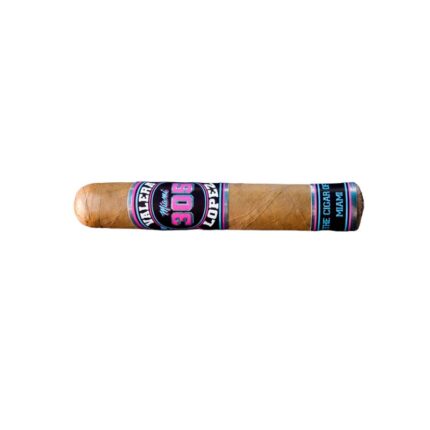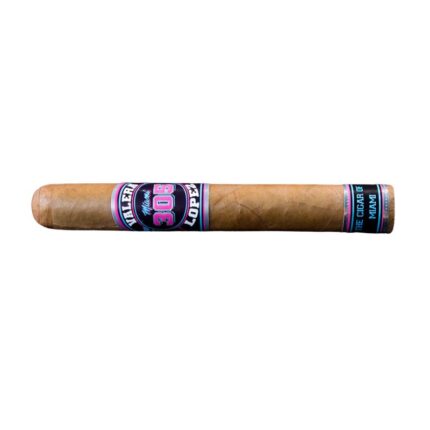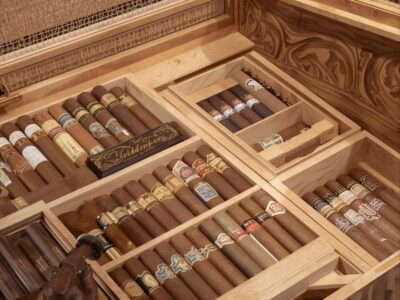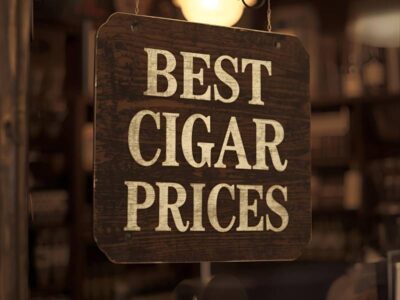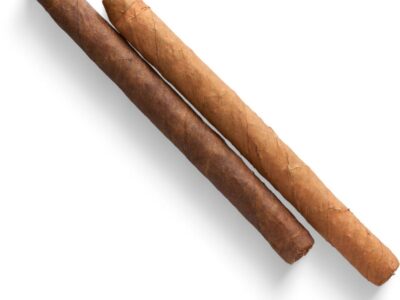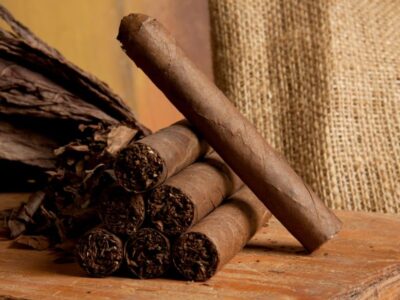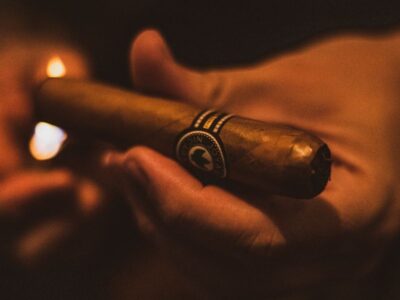With over 15 years of experience in the tobacco industry—from my training as a certified taster to my direct work with growers in Nicaragua and the Dominican Republic—I’ve developed an in-depth knowledge of the secrets behind the best tobacco wrappers. During this time, I’ve had the privilege of evaluating hundreds of leaf varieties, from exclusive Connecticut Shade wrappers to popular commercial blunt wraps. In this comprehensive guide, I’ll share everything you need to know to choose, use, and store the best tobacco wrappers on the market.
Whether you’re an enthusiast looking to perfect your rolling technique or a beginner entering the world of handmade cigars, this guide will provide the knowledge you need to master the art of working with tobacco leaves. From the differences between natural leaf tobacco wrappers and flavored cigar wraps to the best tobacco wrapper storage tips, each section is designed to offer practical, professional advice.
Definition and Basic Purpose
A tobacco wrapper is much more than just the outer layer of a cigar or blunt. This carefully selected and processed leaf is responsible for up to 60% of the final flavor, in addition to directly influencing burn quality and appearance. Unlike traditional rolling papers, which are usually flavor-neutral, the best tobacco wrappers add aromatic complexity and a richer smoking experience.
In premium cigar production, only whole tobacco leaves are used, while commercial blunt wraps often contain reconstituted leaves. The wrapper’s quality can mean the difference between a mediocre and an exceptional experience, making it essential for any enthusiast to understand its characteristics.
Brief History of Tobacco Wrappers
The use of tobacco leaves as wrappers dates back to pre-Columbian civilizations, where the Maya and other indigenous peoples used them in ceremonial rituals. Spanish colonizers adopted and refined this practice, giving rise to the modern cigar. In the 19th century, with the rise of tobacco production in Cuba, the grading and curing techniques we know today were developed, allowing us to enjoy the finest natural leaf tobacco wrappers.
In recent decades, the industry has seen the emergence of flavored cigar wraps, combining tobacco tradition with innovative flavors, as well as the development of organic tobacco wrappers grown without pesticides or chemical additives.
Difference Between Wrappers and Rolling Papers
The main distinction between a tobacco wrapper and a rolling paper lies in their composition and purpose. While rolling papers are designed to be neutral in flavor and let the interior blend shine, tobacco wrappers contribute their own character to the final product. In terms of burn, tobacco wrappers typically burn slower and more evenly than traditional papers.
Another key difference is thickness: rolling papers are deliberately thin for a light smoking experience, while tobacco wrappers can range from delicate Connecticut Shade to thick Maduro layers. For those seeking authenticity, learning how to roll with tobacco leaves offers an unmatched experience—though it requires more practice than using conventional papers.
Types of Tobacco Wrappers
Natural Leaf Wrappers (Tobacco, Palm, Corn)
Natural leaf tobacco wrappers represent the most authentic and traditional option. This category includes:
Tobacco leaf wrappers: From mild Connecticut to bold Maduro, each variety offers a unique flavor profile.
Palm leaf wrappers: Like popular King Palm wraps, providing a clean, neutral burn.
Corn husk wrappers: A less common but interesting alternative for those seeking something different.
Organic tobacco wrappers have gained recent popularity, offering health-conscious consumers a way to enjoy pure tobacco without pesticide residues. These wrappers often come from small farms using sustainable practices.
Flavored Wrappers (Popular Brands and Tastes)
The market for flavored cigar wraps has exploded in recent years, with options ranging from classic grape and cherry to exotic combinations like mango-chili or mocha. Brands like Swisher Sweets, White Owl, and Dutch Masters dominate this segment, offering affordable and easy-to-use wraps.
However, many flavored wraps use artificial flavorings and preservatives. For those who prefer a more natural experience with a hint of flavor, some premium brands offer wraps infused with natural essences during the curing process.
Blunt Wrappers vs. Cigar Wrappers
The debate between Backwoods vs. Swisher wraps perfectly illustrates this difference. Traditional cigar wrappers, like those in Backwoods, are made from whole tobacco leaves, while most blunt wraps (like Swisher) use reconstituted leaves.
The main advantage of blunt wraps is their ease of use, especially for beginners learning how to use blunt wraps. On the other hand, cigar wrappers offer a more authentic experience with complex flavors—though they require more skill to roll properly.

Organic and Hemp-Based Alternatives
For health- and eco-conscious consumers, several interesting alternatives are now available:
Organic tobacco wrappers: Grown without synthetic pesticides or fertilizers.
Hemp wraps: Made from hemp fiber, containing no tobacco but mimicking the experience.
Leaf-only options: Some brands offer 100% pure leaf wrappers with no additives.
These alternatives are particularly popular among those looking to reduce nicotine intake without sacrificing the smoking experience. Many users also report that these wraps burn cleaner and smoother than traditional options.
How to Choose the Best Tobacco Wrapper
Factors to Consider (Thickness, Burn Rate, Flavor)
Selecting the best tobacco wrappers requires weighing several key factors. The leaf’s thickness directly affects rolling ease and smoking experience: thinner leaves like Ecuadorian Shade are ideal for beginners, while thicker cuts like Broadleaf offer more intensity but demand greater technique.
Burn rate is another crucial aspect. A good wrapper should burn slow and even without constant relighting. Flavor depends on personal preference, ranging from the creamy mildness of a Connecticut to the spicy, earthy notes of a Habano.
For those seeking the best tobacco wrappers, I always recommend starting with small samples of different types before committing to a bulk purchase. Pay attention to how each wrapper complements or contrasts with your usual filling.
Popular Brands Comparison (Game, Swisher, Backwoods)
When comparing Backwoods vs. Swisher wraps, significant differences emerge:
Backwoods: Rough, natural leaves with bold flavors—harder to roll but authentic.
Swisher Sweets: Reconstituted wraps, easier to handle, but with more artificial flavors.
Game: A middle ground, with flexible leaves and intense (though less authentic) tastes.
For premium quality, brands like Fronto Leaf or even repurposed cigar wrappers (available at some specialty shops) offer a superior experience. Organic tobacco wrappers from small producers are also worth considering, especially for quality-conscious users.
Price Ranges and Quality Indicators
Tobacco wrapper prices vary widely:
Budget: Swisher, White Owl (under $2 per pack).
Mid-range: Backwoods, Game (3–3–5 per pack).
Premium: Whole tobacco leaves (5–5–15 per leaf).
Quality indicators include:
Flexibility (shouldn’t crack when bent).
Aroma (should smell like fresh tobacco, not chemicals).
Uniform color (no dark spots indicating poor curing).
Texture (veins shouldn’t be overly prominent).
Remember, investing in quality tobacco wrappers is often worthwhile, as the difference in smoking experience can be significant.
How to Use Tobacco Wrappers Properly
Step-by-Step Rolling Guide
Mastering how to roll with tobacco leaves takes practice, but following these steps will improve your results:
Select an appropriate leaf: Choose a wrapper size that matches your blend.
Moisten carefully: Use a damp cloth or steam to make the leaf pliable.
Remove thick veins: Trim any stiff veins that might hinder rolling.
Distribute filling evenly: Avoid clumps that cause uneven burning.
Roll with consistent pressure: Start at one end, maintaining even tension.
Seal gently: Use natural gum or saliva to close.
For how to use blunt wraps, the process is similar but generally easier since commercial wraps are designed for convenience.
Moistening and Preparation Techniques
Proper prep is key when working with tobacco wrappers:
Damp cloth method: Place the wrapper between two slightly moistened cloths for 5–10 minutes.
Steam technique: Briefly pass the leaf over steam to soften without oversaturation.
Humidifier use: For premium leaves, store them in a controlled environment (~70% humidity).
With flavored cigar wraps, avoid excessive moisture, as it can dilute flavors. A light mist of distilled water is usually enough.
Common Mistakes to Avoid
When learning how to use blunt wraps or natural leaves, watch for these common errors:
Over-moistening: A soggy wrapper will tear easily and burn poorly.
Overfilling: Too much material makes rolling difficult and affects burn.
Ignoring leaf grain: Tobacco leaves have a natural «grain»—rolling with it improves performance.
Skipping practice: Rolling with natural leaves requires patience and repetition.
Even experts started as beginners. The key is learning from each attempt and refining your technique gradually.
Where to Buy Tobacco Wrappers
Best Online Retailers (With Price Comparisons)
Finding where to buy cigar wraps online is easier than ever. Top options include:
LeafOnly: Specializes in premium rolling leaves.
WholeLeafTobacco: Excellent selection of natural leaf tobacco wrappers.
TobaccoBarn: Great for bulk purchases.
For commercial flavored cigar wraps, sites like Smoke Cartel or even Amazon offer competitive prices. Always compare not just per-pack cost but also quantity and quality.
Local Smoke Shops vs. Convenience Stores
While convenience stores typically carry only brands like Swisher or Backwoods, specialty smoke shops offer premium options. Advantages of local shops:
Wider selection of organic tobacco wrappers.
Ability to inspect products before buying.
Expert advice from staff.
Access to niche brands.
Always ask about freshness, especially in dry climates where wraps can lose moisture quickly.
Bulk Buying Tips and Wholesale Options
For frequent users, buying tobacco wrappers wholesale can lead to big savings. Consider:
Whole leaves: Cheaper than pre-cut wraps.
Group buys: Some forums organize bulk orders.
Building supplier relationships: May lead to loyalty discounts.
When buying in bulk, ensure you follow proper tobacco wrapper storage tips to maintain freshness.
Tobacco Wrapper Alternatives
Rolling Papers Comparison
When comparing tobacco wrapper vs rolling paper, each has pros and cons:
Rolling papers:
Faster burn.
Neutral flavor.
Easier to roll.
Multiple varieties (rice, cellulose, etc.).
Tobacco wrappers:
Slower combustion.
Added flavor.
More authentic experience.
Wider profile range.
For a middle ground, some manufacturers now offer «hybrid wraps» combining features of both.
DIY Wrapper Options (When in Need)
In a pinch, you can improvise how to use blunt wraps with alternatives like:
Corn husks: Traditional in some cultures.
Rose petals: Require special prep.
Edible rice paper: Flavor-neutral but functional.
These won’t match best tobacco wrappers, but they work in emergencies.
In a pinch, you can improvise how to use blunt wraps with alternatives like:
Corn husks: Traditional in some cultures.
Rose petals: Require special prep.
Edible rice paper: Flavor-neutral but functional.
These won’t match best tobacco wrappers, but they work in emergencies.
Care and Storage of Tobacco Wrappers
Proper Storage Conditions
The best tobacco wrapper storage tips include:
Controlled humidity: 65–70% relative humidity.
Light protection: Store in darkness.
Stable temperature: Avoid sudden fluctuations.
For premium wraps, consider a small humidor or reusing a cigar humidifier.
Extending Shelf Life Techniques
To preserve your best tobacco wrappers:
Use airtight containers with humidity packs.
Keep flavored cigar wraps separate to prevent odor transfer.
Check periodically for mold or excessive dryness.
For long-term storage, refrigerate (don’t freeze).
Signs of Spoiled Wrappers
Recognize when your tobacco wrappers are past their prime:
Moldy or musty smell.
Brittle leaves that won’t soften.
Dark spots or discoloration.
Bitter or unpleasant taste when smoked.
If you notice these signs, it’s best to discard the wrapper to avoid ruining your session.
Most tobacco wrappers aren’t reusable once smoked. However, if you’ve rolled a cigar but haven’t lit it, you may (carefully) unwrap and reuse the leaf if it’s still in good condition.
Regulations on where to buy cigar wraps vary:
Some states ban flavored cigar wraps.
Minimum purchase age is usually 21.
Certain areas impose special tobacco taxes.
Always check local laws before buying, especially online.
Key distinctions in the cigar wraps vs. blunt wraps debate:
Composition: Cigar wraps use whole leaf; blunt wraps are often reconstituted.
Flavor: Cigar wraps offer natural profiles.
Ease of use: Blunt wraps are beginner-friendly.
Price: Premium cigar wraps cost more.
Understanding these differences helps you choose the best product for your needs.
Whether you prefer the authenticity of natural leaf tobacco wrappers, the convenience of flavored cigar wraps, or the health-conscious choice of organic tobacco wrappers, the right wrapper can elevate your smoking experience. By considering factors like burn rate, flavor, and thickness—and following proper tobacco wrapper storage tips—you’ll enjoy smoother, tastier rolls every time.
But if you’re looking for the finest handcrafted cigars in Miami, skip the guesswork and visit Valera Lopez Cigars. Known for their premium aged tobaccos and expert craftsmanship, their cigars deliver an unmatched smoking experience. Whether you’re a seasoned aficionado or new to the world of premium cigars, their selection is a must-try.
Visit Valera Lopez Cigars in Miami and discover why connoisseurs swear by their blends. Your palate will thank you!
Discover our products
Robusto 5×50 Connecticut
$6.99 - $124.99Rango de precios: desde $6.99 hasta $124.99The End 4 1/2×48 Connecticut
$6.99 - $99.99Rango de precios: desde $6.99 hasta $99.99Toro 6×52 Connecticut
$6.99 - $124.99Rango de precios: desde $6.99 hasta $124.99Wait! I'm sure these articles will also interest you:

Valera López Cigar, founded in 2020 in Miami, takes pride in offering premium cigars of the highest quality and reliable delivery service both within and outside of Florida. Our mission is to provide a unique experience with every smoke, ensuring satisfaction and excellence in every detail.



